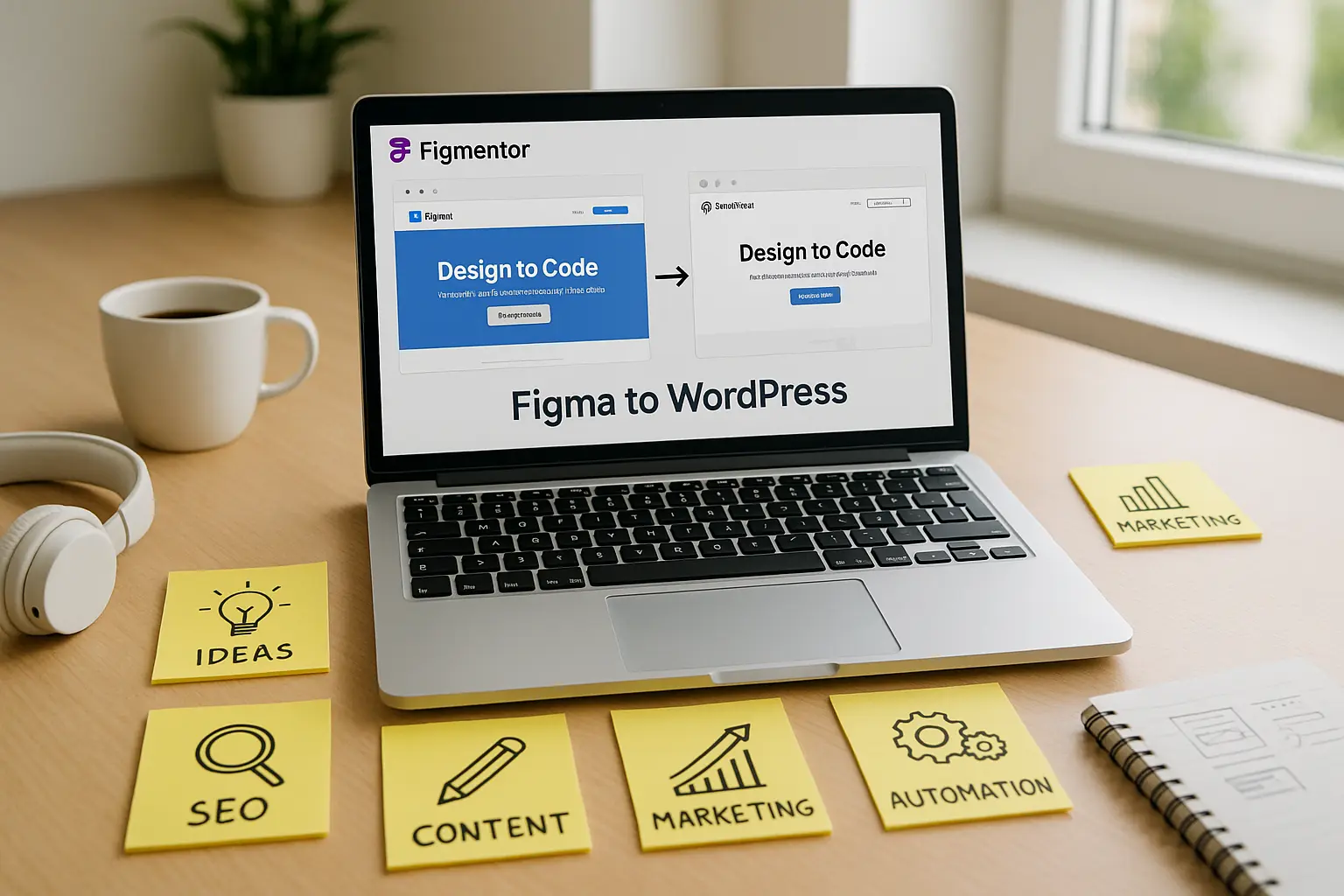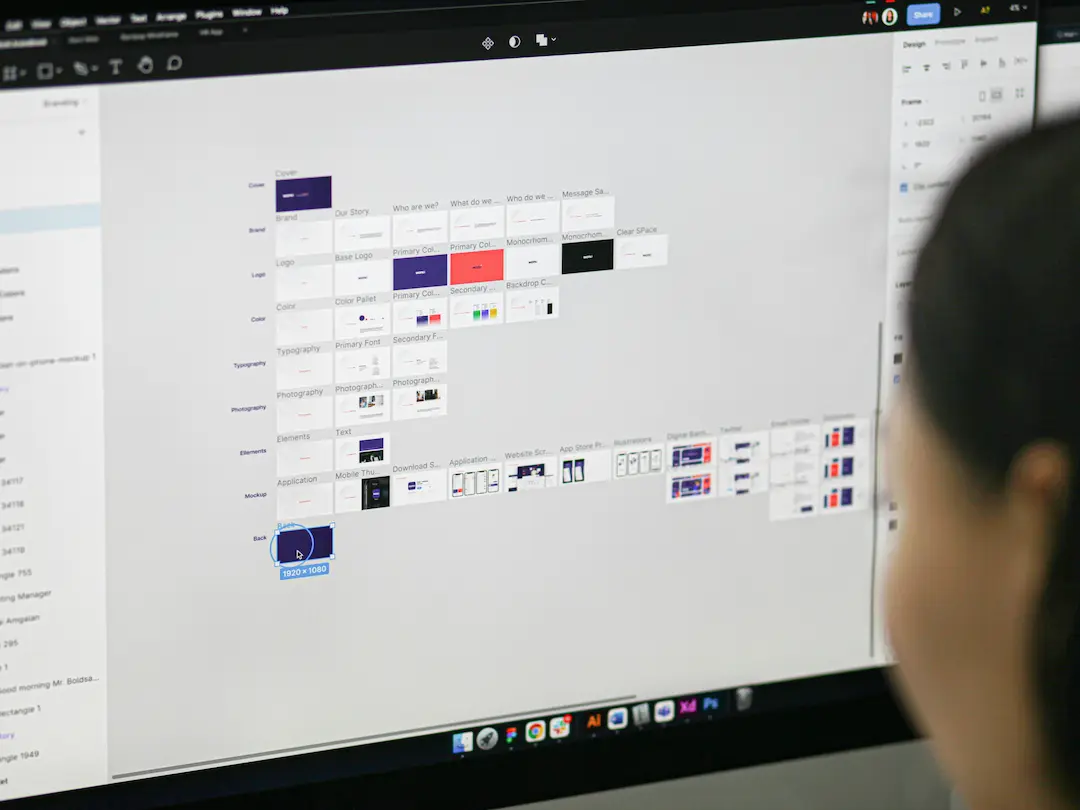Introduction
Designers and agencies often face challenges when converting Figma designs to WordPress. Whether you’re a freelancer, a design agency, or a WordPress developer, understanding the best practices for this workflow is crucial for efficiency and quality.
This Figma to WordPress FAQ guide covers everything from plugin recommendations to workflow optimizations, helping you streamline the process and deliver high-quality WordPress sites from Figma designs.
1. What Is the Best Way to Convert Figma to WordPress?
Converting Figma designs to WordPress can be done in multiple ways, depending on your technical expertise and project requirements.
Option 1: Manual Conversion (For Developers)
- Step 1: Export assets from Figma (SVG, PNG, or CSS).
- Step 2: Set up a WordPress theme (custom or pre-built).
- Step 3: Code the design using HTML, CSS, and JavaScript.
- Step 4: Integrate dynamic content using WordPress PHP or a page builder like Elementor.
Option 2: Using a Plugin (For No-Code/Low-Code Users)
- Figmentor Plugin – Automates the conversion process, reducing manual work.
- Elementor + Figma Integration – Some plugins allow direct import of Figma designs into Elementor.
- Anima – Converts Figma designs into responsive WordPress themes.
Option 3: Outsourcing to a Figma-to-WordPress Service
- Agencies like Figma2WP or Design to WordPress specialize in converting Figma designs into functional WordPress sites.
Key Takeaway: Choose the method that best fits your skill level and project needs.
2. Can I Use Elementor with Figma Designs?
Yes! Elementor is one of the best tools for converting Figma designs into WordPress without extensive coding.
How to Use Figma with Elementor
- Export Figma Assets – Extract images, icons, and fonts.
- Use Elementor’s Drag-and-Drop Editor – Rebuild the design visually.
- Leverage Elementor Templates – Pre-built templates can speed up the process.
- Use Figma-to-Elementor Plugins – Some plugins allow direct import of Figma designs.
Pro Tip: If you’re using Figmentor, it integrates seamlessly with Elementor, making the conversion process faster.
3. What Are the Best Plugins for Figma to WordPress Conversion?
Several plugins can help automate the Figma-to-WordPress workflow:
| Plugin | Best For | Key Features |
|---|---|---|
| Figmentor | Automated conversion | Direct Figma-to-Elementor import, responsive design support |
| Anima | No-code conversion | Converts Figma to code themes |
| Elementor + Manual Figma Add-ons | Visual builders | Drag-and-drop Figma-like design in WordPress |
Recommendation: If you want a fully automated solution, Figmentor is the best choice.
4. How Do I Ensure My WordPress Site Matches My Figma Design?
To maintain design fidelity:
✅ Use Exact Fonts & Colors – Export Figma styles and apply them in WordPress. ✅ Optimize Spacing & Layouts – Use CSS or Elementor’s spacing controls. ✅ Test Responsiveness – Ensure the design works on all devices. ✅ Use SVG for Scalable Graphics – Avoid pixelation on different screens.
Pro Tip: Use Figma’s Dev Mode to extract precise measurements and styles.
5. What Are Common Challenges in Figma to WordPress Conversion?
| Challenge | Solution |
|---|---|
| Responsive Design Issues | Use flexible grids and media queries |
| Font & Typography Mismatches | Export Figma fonts and apply them in WordPress |
| Performance Optimization | Compress images and use caching plugins |
| Dynamic Content Integration | Use WordPress custom fields or ACF |
Key Takeaway: Most issues can be resolved with proper planning and the right tools.
6. Is There a No-Code Solution for Figma to WordPress?
Yes! No-code and low-code solutions like:
- Figmentor – Automates the conversion process.
- Anima – Converts Figma designs into WordPress themes.
- Brizy or Breakdance – Alternative page builders with Figma-like flexibility.
Best For: Freelancers and agencies who want to skip manual coding.
7. How Can Agencies Scale Figma to WordPress Workflows?
To improve efficiency:
✔ Use Templates & Reusable Components – Reduce repetitive work. ✔ Automate with Plugins – Figmentor and Anima save time. ✔ Outsource Complex Projects – Partner with Figma-to-WordPress services. ✔ Train Teams on Best Practices – Improve consistency and speed.
Pro Tip: Agencies can white-label Figmentor for client projects.
FAQ Section
1. Can I convert Figma to WordPress , ?
Yes, but free methods require manual work. Plugins like Figmentor offer free trials.
2. What’s the fastest way to convert Figma to WordPress?
Using Figmentor or Anima for automated conversion.
3. Do I need coding skills to convert Figma to WordPress?
No, plugins like Figmentor and Elementor allow no-code conversion.
4. How do I handle animations from Figma in WordPress?
Use Lottie animations or CSS/JS for interactive elements.
5. Can I use Figma variables in WordPress?
Not directly, but you can manually apply styles in WordPress.
Conclusion
Converting Figma designs to WordPress doesn’t have to be complicated. Whether you’re a freelancer, agency, or developer, using the right tools and workflows can save time and improve accuracy.
Ready to streamline your Figma-to-WordPress process? 👉 Try Figmentor today and automate your design-to-development workflow!




